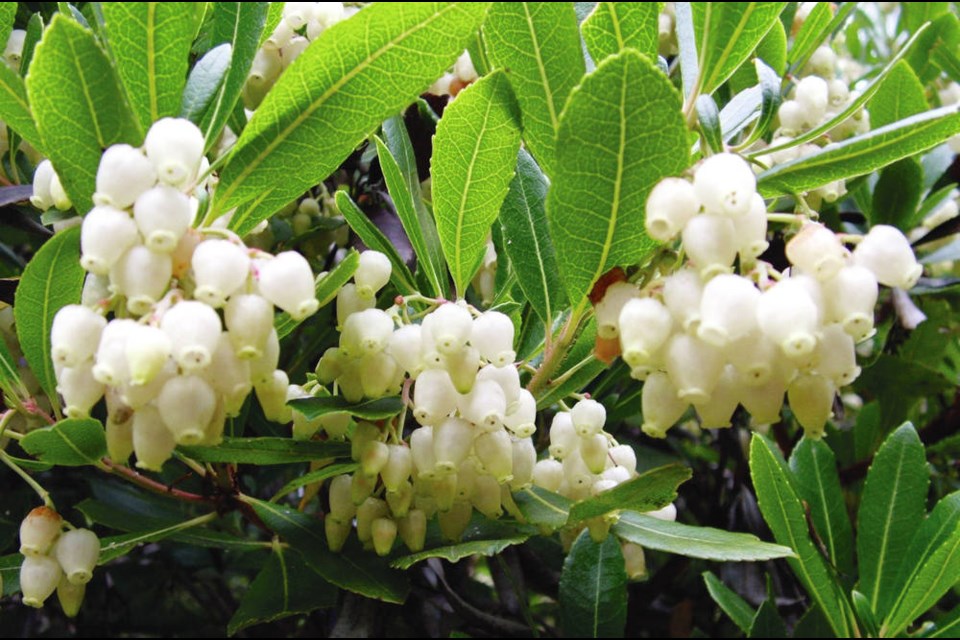November. Not a month we all look forward to with unmitigated glee. The change to standard time means late afternoons will soon be taken over by darkness. It’s chilly and damp.
On the chirpy side of things, these same conditions also bring opportunity to rest a little from the rigours of outdoor work. Long, dark evenings offer time to plan, and dream of next year’s garden adventures.
Because life is more constricted now, I don’t think I’m alone in finding myself observing more closely my immediate surroundings and finding pleasure in simple, homey pursuits.
A big window beside my writing desk looks onto a broadly spreading strawberry tree where I can often observe the entertaining movement of birds. When I last gave the tree a significant pruning, I found a perfect little (empty) nest constructed securely around some of the tree’s twiggy growth.
Hummingbirds come to visit the tree’s little white flowers in the fall. Below the tree, a long brick planter holds a ferny hedge of semi-evergreen corydalis whose tubular flowers are another draw for hummingbirds, which have also been hovering in the last few remaining calibrachoa flowers on the patio.
Out in the garden, I’m currently amusing myself consolidating the “finished” (ready to use) compost into two of my brick compost enclosures. That will empty and make ready for use two other enclosures.
The two piles of finished compost will need to be covered with tarps or plastic sheeting to prevent nutrients from being leached out in winter rains. In the spring, this valued soil amendment will be spread over empty flowerbeds and vegetable plots as they are being prepared for planting.
This is not a good time to spread the compost (or manures) on the garden, for the same reason. Rain will drain off its nutrients. Empty areas do benefit from a protective winter soil cover, though.
Small leaves or chopped large leaves are ideal for this. I am fortunate that neighbours right across the street give me their bags of small maple leaves after they have raked up under their large trees. The leaves are perfect for covering bare soil and for spreading under and around winter vegetable plants such as Brussels sprouts and sprouting broccoli as a protective mulch.
I use the leaves also to cover the carrot, beet and parsnip bed, after their withered foliage has been cleared away and the roots have been topped with about five centimetres of soil. The leaves provide extra insulation. Stakes marking the plot corners are helpful guides to digging the roots as needed through the winter.
In the spring, some of the leaves will have mostly decomposed and can be dug into the soil. Where they have not, I stockpile some of them for mulching around the large vegetable plants (tomatoes, broccoli) in late spring to help keep the soil cool and moist. The rest are distributed among the working compost heaps.
Of course there are always routine seasonal chores to address, just to remind us that a gardener’s work is never done. A sampler:
- Disconnect, drain and store hoses.
- Spread lime on lawns that have been raked clean of leaves and debris.
- Tidy perennial beds.
- Clip away dead growth and weed around the plants.
- Cut down dahlias once the tops have blackened and withered. Where the soil drains freely of excess moisture, the tuberous roots can be left in the ground, protected with a thick covering of aged sawdust or light-textured soil. Where drainage is not perfect, don’t risk leaving the roots over the winter in wet, cold ground. Lift and store them in a cool but frost-free place.Cut down peony stems at ground level, taking care not to damage any of the pink numbs of future growth hovering close to the soil surface. Because peonies are prone to disease in our climate, I don’t compost the stems. Clean the peony area well and apply a light dusting of lime followed by a shallow mulch layer of topsoil or compost.
- Take stock of leftover seeds and make a shopping list of what will be needed and desired for next year’s food and ornamental garden.
- Explore garden centres for treasures — a flowering house plant, a few last spring flower bulbs, an amaryllis bulb, a few small ferns or other foliage plants for living indoor greenery.



